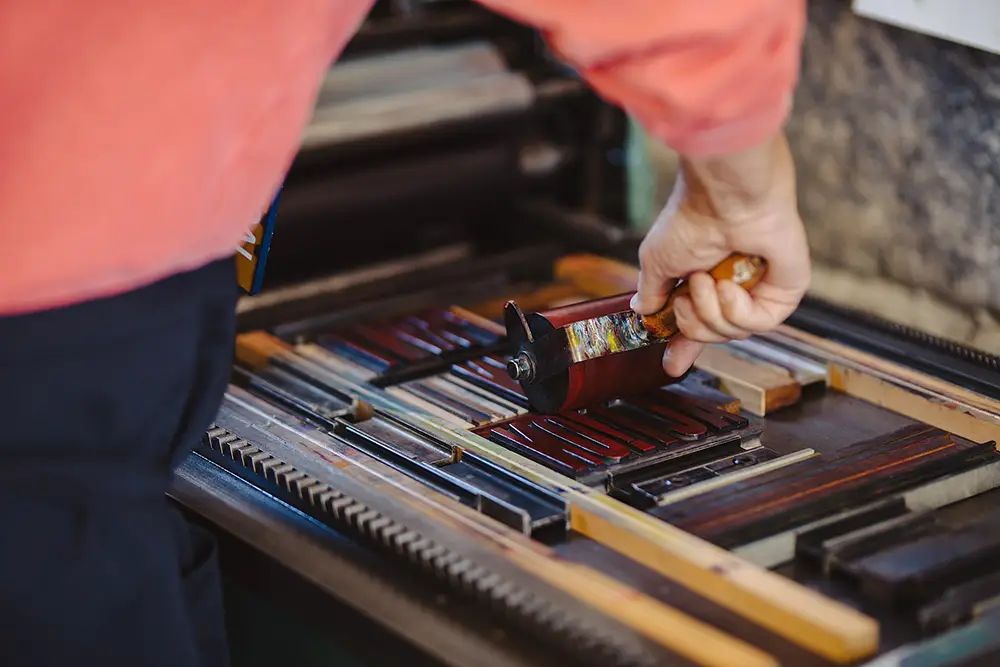Printmaking
Real Art Make Print (RAMP) at Ocean Studios houses a wide range of printmaking equipment, from traditional presses to modern practices to experiment with various techniques. We provide affordable and flexible options to access space, suiting various needs and budgets. Starting from half-days, to monthly plans, providing flexibility for you to work at your own convenience and open to all skill levels.

Our facilities
Our printmaking facilities support the following practices: Screenprinting, Risograph, Relief printing, Letterpress, Dry Point, Collagraph, Monoprinting, Gelli printing
Our facilities are available to book during the following hours:
Monday: 9am – 5pm
Tuesday: 4pm – 8pm
Wednesday: 9am – 5pm
Friday: 9am – 5pm
Print Facilities Pricing
Our spaces are available to book on a pay-as-you-go basis or through a monthly print plan following an induction to the spaces.
To book our spaces, you must complete an induction ahead of booking, there is a one-off fee of £10 for inductions.
Monthly Print Membership
£50 per month. Complete use of printmaking facilities at Ocean Studios
32 hours access to space across 1 month (approx. £1.56 per hour)
Early bird access to events 10% off selected events and masterclasses